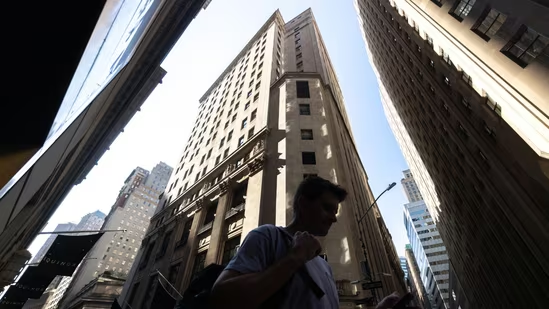New York stocks took a hit at the start of a historically challenging month for the market, as investors braced for key economic data that could determine whether the Federal Reserve will opt for aggressive rate cuts. Wall Street traders pulled back on risk, leading the S&P 500 to its steepest decline since the August 5 meltdown, despite a recent rally that had brought the benchmark index close to its all-time highs. The market’s most influential sector — technology — faced a selloff, with Nvidia Corp. spearheading a plunge among chipmakers. Energy stocks also declined as oil prices erased their 2024 gains. Meanwhile, Wall Street’s “fear gauge” — the VIX — surged above 18, and bond prices climbed. With inflation expectations relatively stable, focus has shifted to the economy’s health, as signs of weakness could accelerate policy easing.
While rate cuts generally support equities, that may not hold true if the Fed moves quickly to prevent a deeper U.S. slowdown. Concerns over the recent uptick in the unemployment rate are likely to keep traders “on edge” until Friday’s payroll data, according to Ian Lyngen and Vail Hartman of BMO Capital Markets. “This week’s jobs report, while not the sole determinant, will likely play a critical role in the Fed’s decision between a 25 or 50 basis-point cut,” said Jason Pride and Michael Reynolds at Glenmede. “Even modest signals in this week’s report could be pivotal in deciding whether the Fed adopts a more cautious or aggressive stance.”
Callie Cox at Ritholtz Wealth Management added that, beyond the macroeconomic picture, we are entering what is often a “miserable time” of year for equities. “While history isn’t definitive, it’s reasonable to expect that this September could be particularly volatile,” Cox observed. “However, the takeaway from decades of seasonal market data isn’t to draw dire conclusions. Instead, consider why this could be a ‘buyable dip,’ as there are numerous reasons to remain optimistic.”
Among the reasons for optimism, she highlighted earnings growth, the likelihood of the Federal Reserve beginning to ease policy amidst controlled inflation, and the large cash reserves held by investors that could soon flow back into stocks.
The S&P 500 dropped 1.6%, moving toward the 5,550 mark — a critical level given the significant open interest in options expiring later this month. The Nasdaq 100 fell 2.5%, the Dow Jones Industrial Average lost 1.2%, and the Russell 2000, representing smaller companies, decreased by 2.7%. Nvidia shares plummeted 8%, while Boeing Co. fell 7.5% following an analyst downgrade.
Yields on 10-year Treasury bonds declined by five basis points to 3.85%, while a record number of blue-chip companies flooded the corporate bond market, seeking lower borrowing costs ahead of the U.S. presidential election. The yen appreciated as Bank of Japan Governor Kazuo Ueda reiterated the bank’s intention to raise rates if economic conditions and prices align with expectations. Morgan Stanley’s strategist, who predicted last month’s market correction, suggested that lagging companies could rebound if Friday’s jobs data indicates economic resilience. A stronger-than-expected employment report could bolster investor confidence that growth risks have eased, Michael Wilson noted. However, JPMorgan Chase & Co. strategists cautioned that even a widely anticipated rate-cutting cycle from the Fed might not sustain the stock market rally, arguing that any easing would be a “reactive” response to slowing growth.
“We are not out of the woods yet,” warned Mislav Matejka in a note, favoring defensive sectors amid falling bond yields. He pointed out that sentiment and positioning indicators remain unappealing, political and geopolitical uncertainties are heightened, and seasonal factors could prove challenging again in September. According to the Stock Trader’s Almanac, September has been the worst month for the S&P 500 since 1950. A contrarian sentiment gauge from Bank of America Corp. recently climbed to its highest level in nearly two and a half years, edging closer to a “sell” signal for U.S. equities.
“Historically, the S&P 500 has faced back-to-back declines in August and September since World War II,” noted Sam Stovall at CFRA. “But history now advises investors to brace for impact, as in election years, this sequential seasonal slump tends to shift to September and October.”

